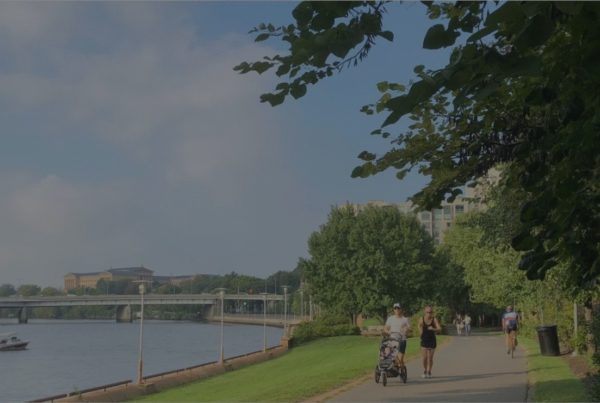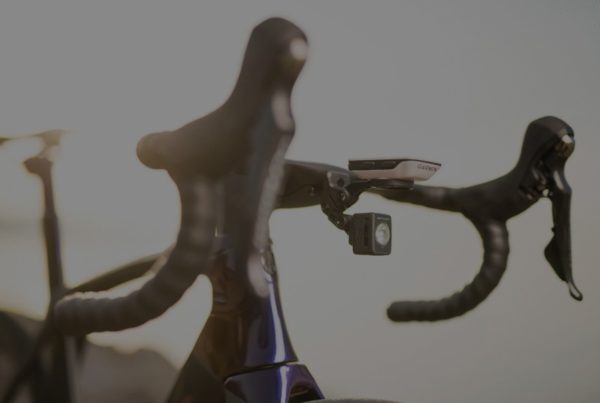As Americans pause to give thanks at the beginning of this holiday season, it’s a good time for us to look past some of the outrages we’ve experienced this past year and reflect on what we cyclists have to be thankful for.
No, we shouldn’t forget that Dr. Ed Farrar is still in the hospital, recovering from the critical injuries he received at the hands of an inattentive driver. On the other hand, we can all be thankful that Dr. Farrar survived, and continues on the road to recovery. And yes, Chris Kasztelewicz lies in a Toronto hospital, his leg severed in a ferocious road rage assault. But again, we can all be thankful that he has fought back from the brink of death, and we can all be thankful that his assailant will be brought to justice on criminal charges that reflect the seriousness of the crime.
But putting these and all the other outrageous incidents we’ve seen aside for the moment, is there anything else we can be thankful for this holiday season? How about this? As we come together with family and friends this holiday, we have some encouraging news from the incoming administration of President-elect Obama. Yes, the nation’s attention is riveted on the economic crisis that held center stage in the historic election that took place just a few short weeks ago, and the economic team that President-elect Obama announced just this week. Less-noticed, by pundits and public alike, but eagerly anticipated by cycling advocates, is the news that the next Secretary of Transportation may well be a cycling advocate. Names rumored to be on the short list include:
• Representative Jim Oberstar — A Minnesota Democrat and nationally-renowned member of the Congressional Bike Caucus. Representative Oberstar chairs the House Transportation and Infrastructure Committee.
• Representative Earl Blumenauer — A Democrat representing Portland, Oregon, Representative Blumenauer—another nationally renowned Congressional Bike Caucus member and founder of the Bike Caucus—sits on the House Select Committee on Energy Independence and Global Warming.
• Representative Peter DeFazio — Another Oregon Democrat, and yet another member of the Congressional Bike Caucus, Representative DeFazio is a senior member of the House Transportation and Infrastructure Committee.
• Governor Ed Rendell — The Governor of Pennsylvania.
• Jane Garvey — The head of the Federal Aviation Administration from 1997 to 2002.
While it’s still anybody’s guess who the next Transportation Secretary will be, it’s a good sign and a strong indicator of the rise of cycling, when three out of five names on the short list are strong advocates for cycling.
But does this short list really represent President-elect Obama’s thinking? Or is it more a case of wishful thinking? Consider the words of Barack Obama himself, when he drew a record crowd of 75,000 at campaign stop in Portland back in May:
“If we are going to solve our energy problems we’ve got to think long term. It’s time for us to be serious about investing in alternative energy. It’s time for us to get serious about raising fuel efficiency standards on cars. It’s time that the entire country learned from what’s happening right here in Portland with mass transit and bicycle lanes and funding alternative means of transportation.”
So was that a reflection of what the candidate Obama intended to accomplish during his administration, or is it more what you would expect a candidate looking out at a sea of bikes in a bicycle-mad town to say? Consider what candidate Obama had to say five months later in October, in the midst of a tough national campaign:
“…Everyone benefits if we can leave our cars, walk, bicycle and access other transportation alternatives. I agree that we can stop wasteful spending and save Americans money, and as president, I will re- evaluate the transportation funding process to ensure that smart growth considerations are taken into account.
I will build upon my efforts in the Senate to ensure that more Metropolitan Planning Organizations create policies to incentivize greater bicycle and pedestrian usage of roads and sidewalks. And as president, I will work to provide states and local governments with the resources they need to address sprawl and create more livable communities.”
And now, as President-elect, Barack Obama is basing his economic recovery plan on a program of massive investment in and building of alternative energy sources, fuel-efficient automobiles, and infrastructure.
Infrastructure. That can mean roads. Highways. Bridges. But it can also mean bicycle infrastructure, and if the influential Congressmen on the short list for Transportation Secretary have their way, either as Secretary, or as the Congressmen who will be authoring the legislation sent to a bicycle-friendly administration, infrastructure will also mean that cyclists will be considered and accommodated when infrastructure is built.
Of course, some cyclists are adamantly opposed to bicycle-specific infrastructure, while other cyclists are just as ardently in favor. But whichever camp cyclists happen to fall into, it’s evident that the lack of bicycling infrastructure is the greatest impediment to getting new cyclists on the road, and it’s also evident that with increased numbers of cyclists on the road comes increased safety for all cyclists. For the sake of our environment, for the sake of our national security, for the sake of our public health, and for the sake of our personal safety, we need to get more cyclists on the road, and it appears that our next President, our next Transportation Secretary, and our next Congress may all understand that.
So as we pause to give thank this holiday season, we cyclists can reflect on what a difference a year makes. Last year, Representative Patrick McHenry, a Republican from North Carolina, ridiculed the bicycle as a 19th century solution to a 21st century problem. This year, the League of American Bicyclists reports that several members of the Congressional and Senate Bike Caucuses, Republicans and Democrats alike, won re-electionby large margins, and key members of the Bike Caucus are in firm control of the House Transportation and Infrastructure Committee. Last year, the current Transportation Secretary, Mary Peters, suggested that bicycle infrastructure is not transportation infrastructure. This year, the incoming Transportation Secretary may well be one of the nation’s staunchest bicycle advocates. Last year, the number of cyclists was on the rise. This year, from Portland to New York, our numbers continue to rise.
So yes, while we have had our trials and tribulations on the road behind us, and we will certainly have more on the road ahead of us, we have much to be thankful for this holiday season.
Follow-up on Ed
(In my last column, I printed an excerpt of a letter from C.S., who wrote in response to the crash that sidelined Dr. Farrar:
This was just the beginning. We as a club are going to do more. We want Ed’s accident and situation to help change not only cycling in our community but our state and country. Ed has always showed and taught us that bikes matter. He did it by example and always with grace and dignity.
Can you help us? What should be our next step in bike advocacy? How do we re-educate our community about bike safety and rider vulnerability? How do we take a stand against vehicle aggression?
I put the question to Legally Speaking readers, and have received many responses in regards to what individual cyclists can do, many of which will be featured in an upcoming column. But once again, I’m going to leave the question open to Legally Speaking’s readers: What steps can a club take for bicycle advocacy? What can a club do to improve bicycle safety, protect vulnerable road users, and stop aggression against cyclists?
Look for the answers to these questions soon. Until then, ride safe,
Bob
Nov. 27, 2008
(Research and drafting provided by Rick Bernardi, J.D.)
__________
I’d like to thank everybody who has contacted me to request my appearance at their event. I will be speaking as extensively on “Bicycling & the Law” this year as my practice will allow, and will make plans to appear before any club, bike shop, or other engagement that is interested in hosting me. If you would like me to appear to speak at your event or shop, or to your club or group, please drop me a line at bookbob2speak@gmail.com (and if you would like to contact me with a question or comment not related to my speaking tour, please drop me a line at mionskelaw@hotmail.com). I’m looking forward to meeting as many of my readers as possible this year.



